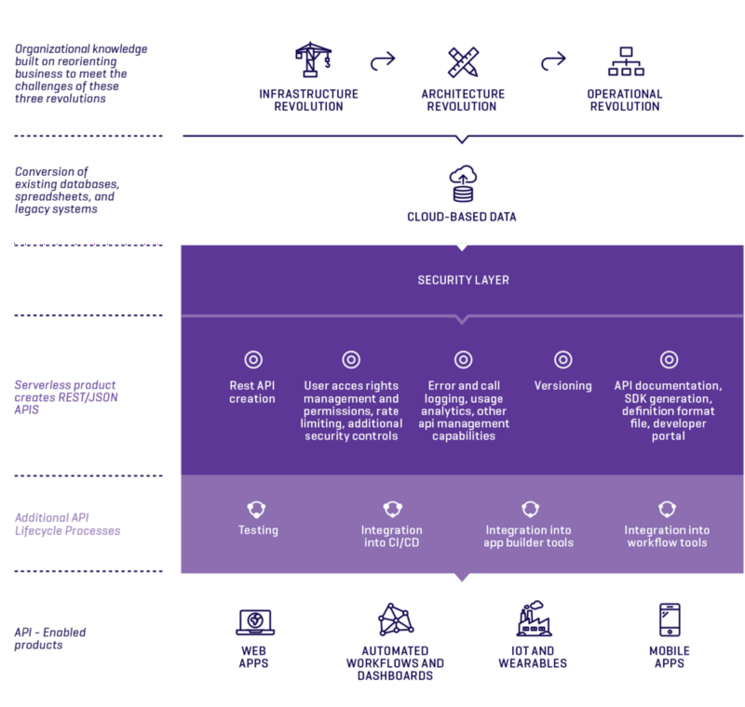DreamFactory was recently featured in a Medium post from APIdays, penned by Mark Boyd and Mehdi Medjaoui. First in a series, it does a great job of detailing the challenges enterprise companies face when building APIs.

We know that two of the key factors driving cloud and API environments today are the need for agility, and the desire to reduce complexity. Serverless is igniting the interest of many because it can respond to both of those factors. To get there, business must first understand what value they are opening up by creating an API, and then serverless can help them open and refine that value faster, and cheaper. In an economy that can scale—like APIs— learning faster than the market is the key to success, and serverless architecture can let API providers quickly enter the market, and iterate towards creating real value.
Our CEO Bill Appleton contirbuted this to the piece:
It used to be that all the attention was on the server. Now in the enterprise, there are two teams: client and backend, but a back-and-forth negotiation between the two can take months to play out and mobile projects can fail if they don’t get their act together.
But it is almost a bigger problem if they do get their act together: we have seen this again and again. In an enterprise, they start with one API, then they don’t want to rebuild that first API, so they build a second API. That development is outsourced, and over time, they dig this hole of complexity that can’t scale, that can’t port anywhere.
DreamFactory’s solution is one that meets the values of the market of reducing complexity and empowering the Developer. You gain dexterity by not being bogged down by new application architecture or backend servers.
Related reading: Combining Multiple Data Sources In One API With DreamFactory
Terence Bennett, CEO of DreamFactory, has a wealth of experience in government IT systems and Google Cloud. His impressive background includes being a former U.S. Navy Intelligence Officer and a former member of Google's Red Team. Prior to becoming CEO, he served as COO at DreamFactory Software.
























 Blog
Blog

